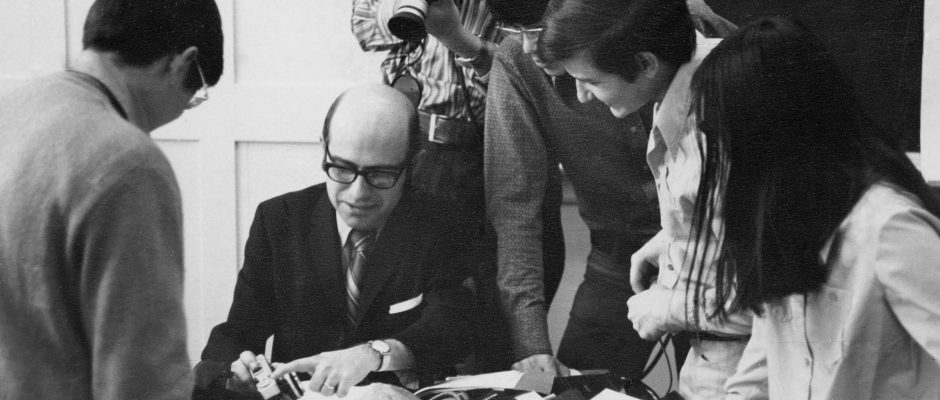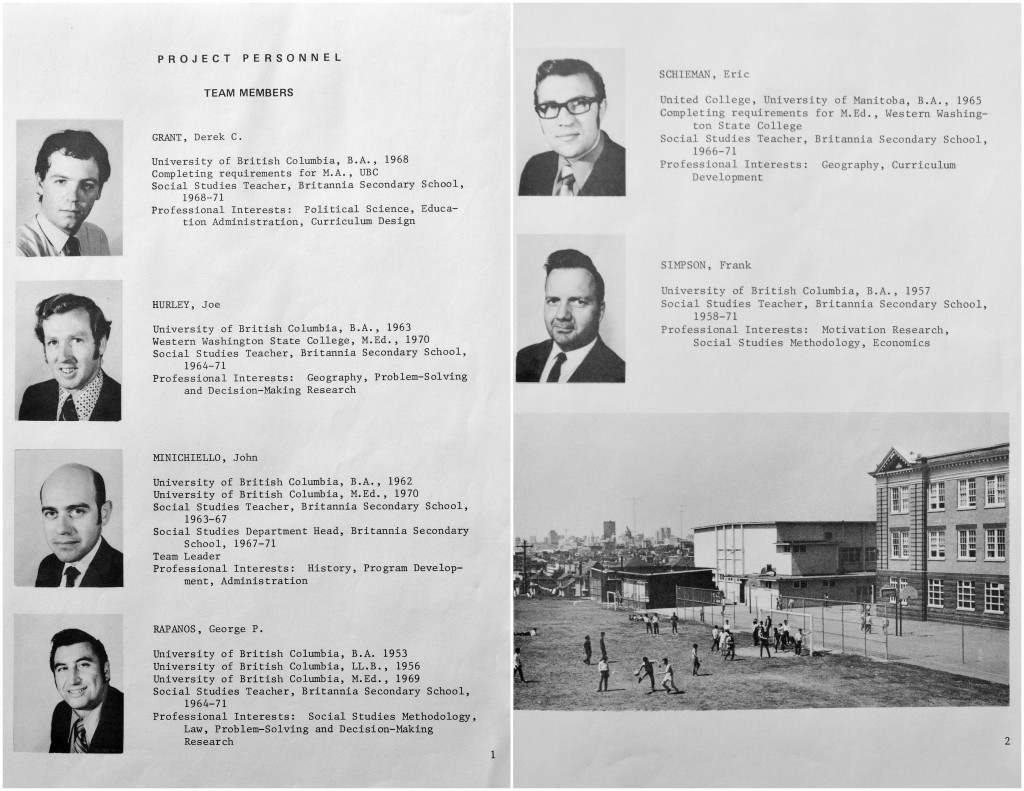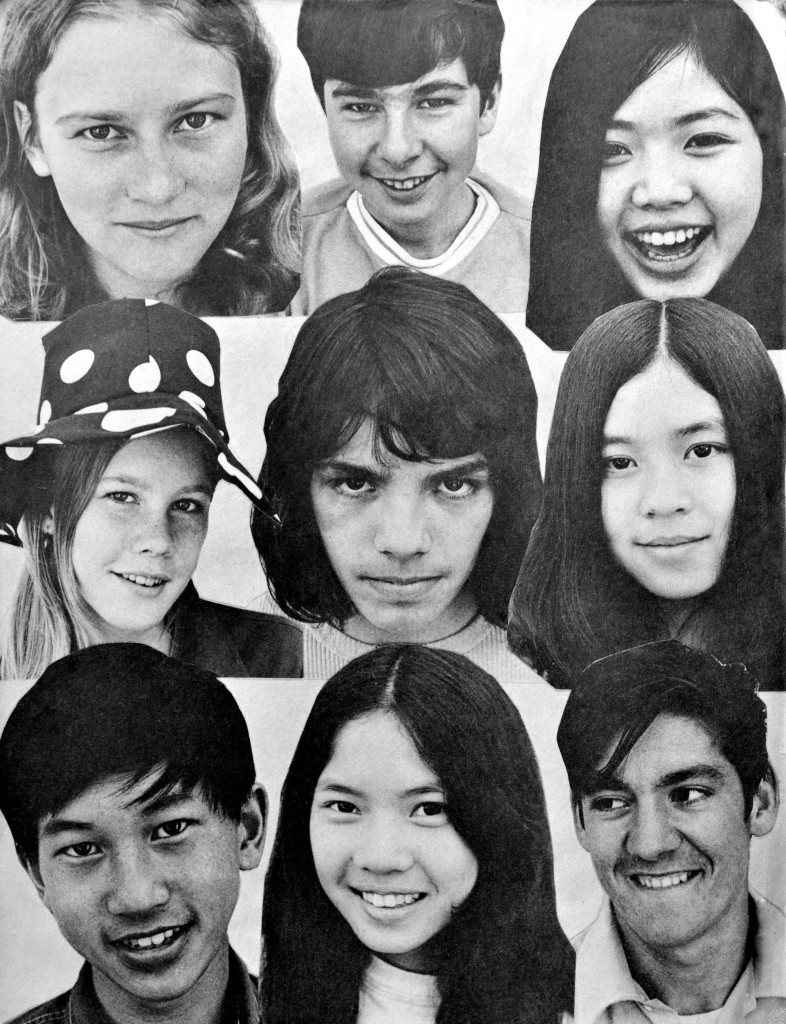The Inner City Project – Student Initiated Research Into Problems of the Inner City
Innovative Programs

The Inner City Project (1970 – 1974) was the brainchild of John Minichiello, Social Studies Department Head at Britannia Secondary School. It was one of 14 projects involving teams of Social Studies teachers from the four western provinces. These teams worked together as part of an organization called Project Canada West. Project Canada West, in turn, was sponsored by a national organization based in Ontario called the Canada Studies Foundation. Funding also came from teachers’ organizations such as the British Columbia Teachers Federation.
The objectives and rationale for the Inner City Project are set out in the following excerpt from the project team’s Annual Report for 1970-71 (pp 8-9):
It is the view of the Inner City Project Team that the distinguishing mark of a truly democratic society is that its members have the freedom, indeed, have the responsibility to initiate action on matters of social concern. In other words, they must assume an active role in deciding what are the crucial issues or problems of their society and how they can best be solved. But they must do more than this. Once they have identified what they feel to be the issues, decided on their order of priority, and chosen their preferred course of action, they must convince their fellow citizens of the validity of their point of view. It is clear that if they are to have a chance at all of accomplishing all this, they must possess certain skills.
Problem solving appears to us to be one of these skills and we have made it a central concern of our project. We believe strongly that if we can successfully devise ways of teaching our students the nature of the problem solving process and training them in the techniques of problem solving, we will have come a long way towards preparing them to play a meaningful role in the political life of their community.
In this connection, it is our intention that our students will identify what they believe to be the problems of their community, that they will devise their own explanations was to why these problems exist, and that they will formulate their own solutions to these problems…
We have pointed out that it is not enough to identify, explain, and devise a solution to a problem – a person must convince others of the worthiness of his beliefs. To have any chance of accomplishing the latter, he must be skilled in communicating how he feels. Furthermore he must be able to interpret and evaluate messages sent to him.
Thus, it is our intention to expose our students to a variety of media, to show them how these media can be used to convey different types of information about the urban environment, to illustrate how media distort reality and how they have, in fact been used deliberately to this end, and to instruct them in the use of equipment associated with commonly used non-print media. Also, so as to impress upon our students the idea that communication has not occurred until the message has been received and properly understood, and that such true communication is less frequent than commonly believed, we will have them delve into the nature of the communication process.


